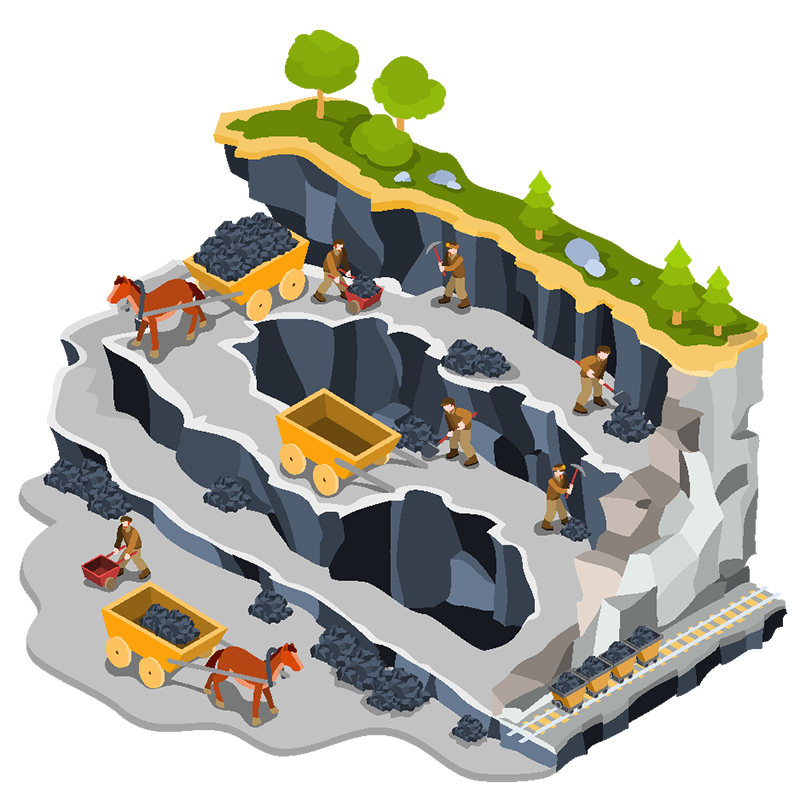INTRODUCTION
As the mainland of Australian continent, Australia is the country that includes the island of Tasmania and numerous smaller islands with the 13th-largest economy and ninth-highest per capita income (IMF). It is a country that grades exceedingly in value of life, wellbeing, learning, profitable liberty, and civil authorities and governmental privileges. Mining is the process that involves all the operations of extracting minerals and hydrocarbons from mines. Exploration of these minerals and hydrocarbons is also the part of mining.
Most famous mining companies and mining services companies running in Australia are Adani Mining, Bechtel (CSG-LNG project management), BHP Billiton, Cuesta Coal, Fortescue Metal Group, Gloucester Coal, GVK and Hancock Prospecting. Major driver of economic growth in mining investment of Australia was at highest during 2002 to 2012. The major reason for that increase was due to exaggerated interest and demand of Asian economies, especially China.
However in 2013, this investment reaches its peak. The report of Economical pamphlets of 2014-15, there was an uncertain drop in this asset during 2014-15, with a very high-pitched falls in 2015-16 and 2016-17. Rise in the cost, taxes and the decrease in the production are the basic reasons for this fall and decline.
AIM OF ANALYSIS
1. To look into the strength and weakness of the current business of mining in Australia.
2. To analyse the current business portfolio to make decision for investment in this field.
3. To look into the effects of external factors those are directly or indirectly affecting the business in some means.
PESTEL ANALYSIS
“A PESTEL analysis is a framework or tool used by marketers to analyze and monitor the macro-environmental (external marketing environment) factors that have an impact on an organization.” “PEST is an acronym for political, economic, social and technological – external factors that commonly affect business activities and performance (Harvard professor Francis Aguilar in 1967).”
Tax changes, business barriers, changes in laws, change in the policies of government can be some of the factors in macro-environment that can affect the decision of investing in some organisation. In order to analyze these changes and effects we use PESTEL MODEL. The metals and mining industry in Australia contains: aluminum, iron and steel, expensive metals and minerals, coal and base metals. Further, this embraces mining (withdrawal from the ground) as well as making of metals such as aluminum, lead and steel.
1. POLITICAL FACTORS (PESTLE)
If we have a look on Australia as a country it is an innocuous terminus for investment. The country’s political and controlling environment is steady, exposed and broad-minded, enabling investors with a remarkable step of assurance and conviction. As a wealthy and diverse country in funding of minerals Australia will remain a continuous provider of minerals. There is an excessive demand of minerals world while, mostly in China. But this also is governed by the growing economy rate of China.
There are also a few world-class discoveries of minerals recently in Australia. But with the more and more, multinational mining companies explorations on mineral deposits that also offer good returns on mining investment there is a progressive failure in mining investment in Australia. With the rise in costs, commodity prices are lessening, increase in taxes, efficiency is concern. Therefore it is expected that in coming few years there will be a decline in mining investment in Australia.
2.ECONOMIC FACTORS (PESTLE)
As compare to the income levels property prices are generally high in Australia, generating a countless claim for rental properties. Australia brags constantly strong GDP growth because of very little gradation danger in its economy. Mining companies are negotiating more with the local community because they are more cultured and sophisticated. In spite of project standstills and a slower pace of development, the mining industry’s capacity deficiency continues.
3.SOCIAL FACTORS (PESTLE)
Firm’s goods and the accessibility and readiness of individuals to work also depend on the changing social trends of a country. Working class, the middle class, and the upper class are the three main social classes of Australia, but the restrictions between these groups are a matter of discussion. Unavailability in reasonably priced housing, increased local costs of living, psychological influences on mine workers, skills lacks in trades, burden on local community services, and limited variation and disadvantage between mining and non-mining communities are the social factors that have an impact on mining business in Australia.
4. TECHNOLOGICAL FACTORS (PESTLE)
New goods and new developments are generated by new technologies. Technology is also a cause of decrease budgets, advance worth and lead to invention. These new developments are beneficial both to the traders as well as the organizations manufacturing the goods. World’s competitive mining technologies depend on the mining industries in Australia. With the enhancement of mining machinery and techniques there is a fall in mining costs, so the earlier inefficient extractions now become more financial. The Australian mining industry devotes expressively in research and development (R&D).
5. LEGAL FACTORS (PESTLE)
Legal factors are related to the legal environment of a country in which firm operates. Age judgement and debility judgement legislation, a rise in the slightest wage and greater desires for firms to recycle are some of the examples of comparatively current legal factors that mark an organization’s actions. Legal variations can upset an organisation’s budgets and demand. For the mining industry, the Nation has legislated in respect of establishments, spreads, tax policy, national safety/defence, Ethnic moralities, foreign affairs, opposition, occupation and environmental matters.
6. ENVIORNMENTAL FACTORS (PESTLE)
Weather and climate changes are included in environmental factors. As we are moving more towards global warming and nation is demanding environmental friendly products, organisations are affected by these factors. Increased mine waste, rise in impending for pollution, increased mine size, more over growing water and energy intake are some of the environmental factors that directly affect mining process. Air pollution and greenhouse factors have major impressions on Australia’s mining export, as they affect coal adversely and gas positively, but with the moving race as the technology is improving, the influence of these factors are reduced to slightest.
CONCLUSION
Mining industry in Australia enjoys the highest place in the economy of Australia due to abundance of ore and minerals in Australia the industry has its major share in the GDP of Australia. The latest technology and machinery makes the industry a positive and attractive boodle for the investors. However, living cost, political environment and increasing pressure of taxes are the discouraging factors for the foreign investors.

